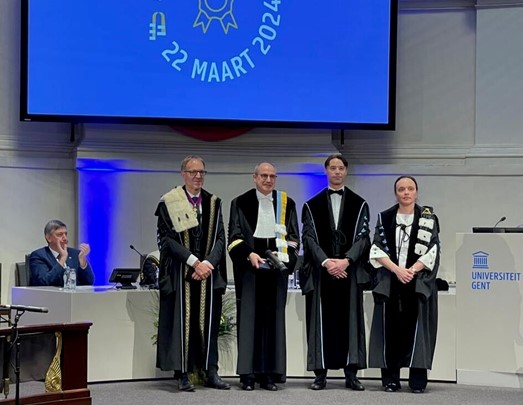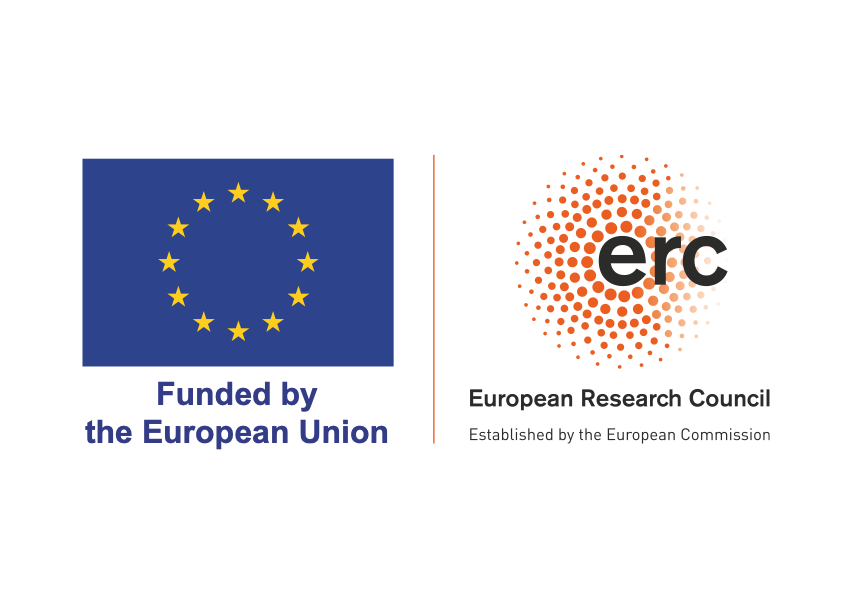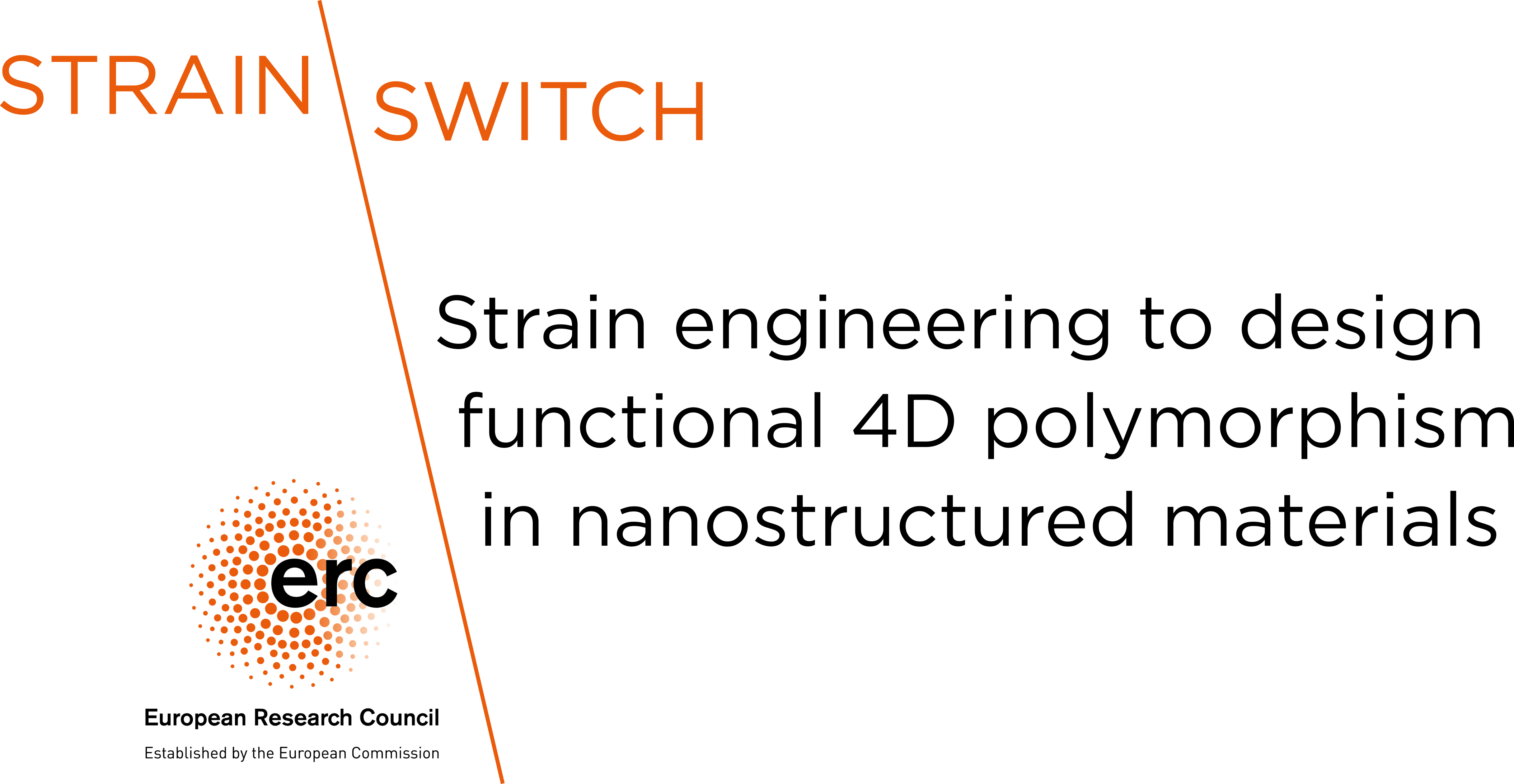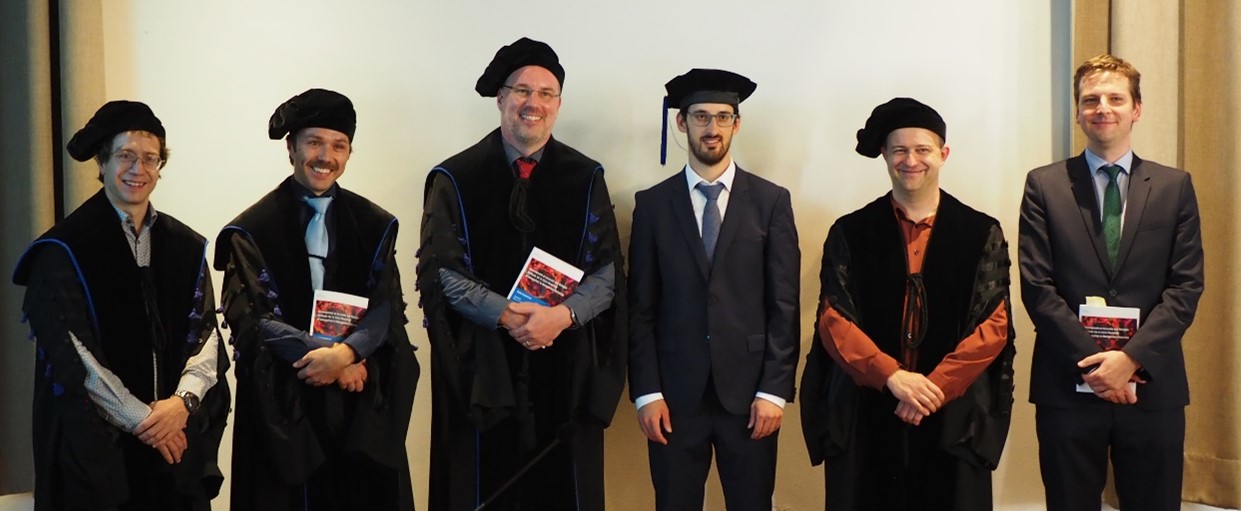In the framework of several recently granted projects, various vacancies at the PhD level are available within the research group of Van Speybroeck at the Center for Molecular Modeling (http://molmod.ugent.be).
A general description of the research performed within the group of Van Speybroeck can be found here https://molmod.ugent.be/research-statement-veronique-van-speybroeck
Vacancies are available in the following research domains :
I. Bridging the gap between density functional theory and quantum tensor networks to accurately model strongly correlated nanostructured materials (DFT+TN)
This research is situated in a concerted research action between the Van Speybroeck group at the Center for Molecular Modeling (http://molmod.ugent.be) and the group of Frank Verstraete at the Quantum Group (https://quantumghent.github.io/). Furthermore external partners at CALTECH and the University of Munich are involved in the project.
One of the biggest challenges in computational materials science is the accurate property prediction of nanomaterials exhibiting strong electron correlations, where the behavior is dominated by strong interactions. By merging quantum tensor networks (TN) with commonly used density functional theory (DFT) methods, new DFT+TN framework will be developed which will be applied on a series of technologically relevant nanomaterials. Materials of interest are perovskites having optoelectronic and photocatalytic applications, and metal-organic frameworks having sensing applications.
Within this research action various PhD positions are available, which vary from very fundamental topics - where tensor networks having crystal symmetries will be developed to be applicable to realistic materials - to more application oriented subjects - where band structures will be determined for realistic materials from which effective Hamiltonians will be derived that can be solved with tensor networks. Depending on the interest of the PhD applicant, the research can be more oriented towards fundamental or application oriented research. The interested applicant, should have a strong interest in many-body physics and quantum mechanical methods for complex materials. The future PhD students will work on a very challenging new research direction set up between two groups of excellence namely the Quantum Group and the Center for Molecular Modeling. Furthermore the PhD students will have the opportunity to perform research visits at CALTECH and the University of Munich.
II. Strain to stabilize metal halide PERovSkites: an Integrated effort from fundamentalS to opto-electronic applicaTions (PERsist).
This research is situated in the framework of a running interuniversity research project PERsist with experimental partners of the KULeuven (prof. Hofkens, Roeffaers; https://www.hofkenslab.com/) and UAntwerpen (prof. Bals, Van Aert, Verbeeck ; https://www.uantwerpen.be/en/research-groups/emat/)
From the application point of view, this project aims to develop novel opto-electronic materials with higher conversion efficiency and lower production costs to be used in medical and security scanners. Metal halide perovskites (MHPs) have emerged as high-performance semiconductors due to their strong absorption and emission in a broad spectral range and their ease of manufacturing. However their integration in opto-electronic devices is hampered by inherent stability issues. Within this project, we explore a new paradigm based on strain field engineering to stabilize the optically active phase under ambient conditions. Our proof of concept results were published in Science, which has become a highly cited paper (https://doi.org/10.1126/science.aax3878). The project builds on the synergy between leading experts in high-end micro/spectroscopy & modelling of nanomaterials. The materials are synthesized and tested in devices at the group of prof. Hofkens (KULeuven), characterized by high-resolution Electron microscopy at the EMAT group of the University of Antwerp and modeled within the group of Van Speybroeck at the CMM.
Within the framework of this project, we aim to develop methods to model realistic metal halide perovskites having length scales up to 50 nm. As quantum mechanical calculations are not feasible anymore on these long length scales, we will develop Machine Learning Potentials (MLPs) for complex Metal Halide Perovskites, having defects at the short and mid-range length scale. The MLPs will be used to simulate materials subjected to external strain from the nano- to the micrometer scale and to evaluate their stability of oxygen and water. Using these tools, it is the aim to unravel the origin of enhanced stability by applying external strain fields and to evaluate in how far the materials remain stable under realistic operating conditions.
The interested applicant should have a strong interest in technological applications, method development and simulations for real materials. The selected candidate will work in an emerging research field where MLPs are developed for complex materials. Within the CMM, various PhD students are investing strongly in this research area. A few recent papers from the CMM, in this field are https://www.nature.com/articles/s41524-023-00969-x; https://doi.org/10.1021/acs.chemmater.2c01508.
The future PhD student will interact very often with the experimental partners who are part of the project.
III. DEFect-engineering and machine learning MODeling of UiO-66 and its catalytic properties (DEFMOD)
This research is situated within the framework of a recently granted FWO research project between the group of Van Speybroeck (Center for Molecular Modeling) and the group of prof. Van Der Voort (COMOC, https://www.comoc.ugent.be/)
Within this project we aim to synthesize and characterize meticulously controlled defect engineered MOFs, to model and understand these defects from the nano- to the mesoscale with quantum accuracy (up to 50 nm) and to apply these for catalytic applications. From the computational side, we will develop within this project new models to construct defect engineered materials having spatial heterogeneities from the nano to the mesoscale. A close interaction loop will be set up to structurally validate the mesoscopic systems with experimental characterizations at various levels. For these atomistic models, we will develop machine learning potential based on underlying Density functional theory (DFT) training data generated on nanocells having dimensions less than 10 nm, which are representative for the simulation of mesoscaled systems with structural disorder up to 50 nm. The targeted MLPs need to cover the behavior of defective MOFs close and far from equilibrium including reactive events which occur during catalysis. The CMM has recently published some proof of concept papers to generate MLPs for realistic materials see for example: https://www.nature.com/articles/s41524-023-00969-x.
This research is thus embedded within a grand effort of the research group of Van Speybroeck to model materials at longer length and time scales while maintaining quantum accuracy.
Diploma requirements
Master’s degree in the field of Physics, Engineering Physics or an equivalent master. Students who will graduate in the coming months can also apply.
Job Profile
- You are highly motivated to become an independent researcher and to contribute to important societal problems related to clean energy production, non-fossil based production of chemicals, design of materials for the next generation energy carriers,…
- You have a strong interest for quantum mechanical methods applied to technological relevant materials.
- You have a strong interest to develop, implement and apply new physics oriented models in material science.
- You have a strong academic record showing your potential to become an excellent researcher.
- You are able to work in a team and have a strong motivation to collaborate with other researchers within both the CMM and our network.
- We are looking for candidates with a pro-active working style; willingness to look beyond the borders of his/her own discipline and a strong motivation to work in a multidisciplinary team.
- Experience with quantum chemistry software (Gaussian, VASP, CP2K,…) and coding (Python, C, ...) is an advantage. For students without modelling experience we will provide active training during the first months.
What we offer
- A PhD position for a period of four years. There will be an evaluation after one year.
- You will be embedded in a dynamic environment at the Center for Molecular Modeling and have plenty of opportunities to interact with fellow researchers. You will have many interactions with our partners involved in the projects. You will have access to state-of-the-art computer infrastructure at the Flemish High-Performance Computing Centre (VSC).
- You will have the opportunity to follow a wide range of training and educational courses part of the Doctoral Schools program of the Ghent University.
- You will have the ability to participate actively in various international conferences, perform international research stays at the most prominent universities worldwide with whom we collaborate to strengthen your skills.
- Interested candidates will have the ability to also contribute to education of the CMM by giving exercise classes.
- Van Speybroeck has a very strong track record in coaching PhD students, under her supervision ca 35 PhD candidates successfully defended their thesis. Most of them found jobs afterwards in industry, academia and have built very strong CVs during their time at the CMM.
How to apply
Interested candidates are requested to prepare the following documents (all in English) and send them to cmm.vacancies@ugent.be before June 15th, 2023 with ‘[Vacancies Spring 2023] *FirstName*_*LastName*’ as subject :
1. A complete application form. Download this form underneath. -- Saved as pdf and named as follows: 1_AF_*FirstName*_*LastName*
2. A motivation letter, including the preferred research topic. -- Saved as pdf and named as follows: 2_ML_*FirstName*_*LastName*
3. A curriculum vitae. -- Saved as pdf and named as follows: 3_CV_*FirstName*_*LastName*
4. Copies of the relevant diplomas and transcripts (certified record of full enrollment history at educational school). Diplomas and transcripts that are not in Dutch or in English should have an official translation in Dutch or English. -- Saved as pdf and named as follows: 4_DT_*FirstName*_*LastName*
Further information
If you are interested in one of these positions, you may always contact our project officer through cmm.vacancies@ugent.be for more information or any other question you would have.














